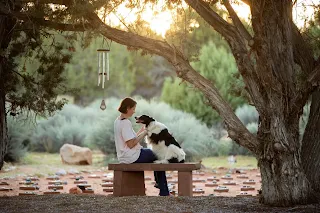Hey there, fellow pet lovers! Today, we're diving into the world of one of the slowest and most fascinating creatures on the planet – the sloth.
These little guys are like the ultimate chillers of the animal kingdom. Did you know that sloths move so slowly that algae actually grow on their fur? It's like nature's version of a green blanket, helping them blend into the treetops and stay hidden from predators. And speaking of fur, sloths have a pretty interesting grooming routine. Instead of licking their fur like cats or dogs, they use their claws to comb through and clean themselves.
Sloths are also superstars when it comes to napping. They sleep up to 20 hours a day! Imagine snoozing away most of your life. But don’t be fooled by their lazy appearance; they’re actually quite good swimmers. Yep, they can hold their breath underwater for up to 40 minutes and are known to enjoy a good paddle in the water when they need to travel.
Their diet is pretty unique too. Sloths mainly eat leaves, which aren’t exactly packed with energy. This slow-paced lifestyle helps them conserve energy and digest their leafy meals, which can take up to a month! And here’s a quirky fact: sloths only come down from the trees to poop, which they do about once a week. Talk about a minimalistic approach to life!
One of the coolest things about sloths is their grip strength. They have long, curved claws that can grow up to four inches long, perfect for hanging onto tree branches. Their grip is so strong that even when they’re asleep, they remain securely attached to the branches.
This is super important because sloths spend most of their lives hanging upside down. Their entire anatomy is adapted to this lifestyle, with their internal organs positioned differently compared to other mammals to accommodate their upside-down living.
Sloths are divided into two main types: two-toed and three-toed. Despite the names, both types have three toes on their hind limbs. The difference lies in their front limbs, where two-toed sloths have two fingers, and three-toed sloths have three. These two types also have different numbers of neck vertebrae. Three-toed sloths have more neck vertebrae than any other mammal, allowing them to rotate their heads almost 270 degrees. This impressive flexibility helps them spot predators and reach for leaves without having to move their entire bodies.
Speaking of predators, sloths have quite a few natural enemies, including jaguars, harpy eagles, and snakes. Their primary defense mechanism is their camouflage, thanks to the algae growing on their fur. When sloths do need to defend themselves, they use their sharp claws to swipe at attackers. While they’re not the most aggressive creatures, those claws can do some serious damage if needed.
Sloths have a fascinating symbiotic relationship with the algae that grows on their fur. The algae provide camouflage, and in return, the sloth’s fur offers a habitat for the algae. Additionally, sloth fur is home to various insects, including moths and beetles. Some researchers believe that the presence of these insects might help fertilize the algae, creating a tiny ecosystem right on the sloth’s back.
Now, let’s talk about sloth babies. Female sloths give birth to one baby at a time, and the little one clings to its mother’s belly for several months. This close bond ensures the baby is protected and can learn essential survival skills. As the baby grows, it gradually becomes more independent but still stays close to its mother for about a year.
Sloths are native to the rainforests of Central and South America. They thrive in the canopy layer of the forest, where they can find plenty of leaves to eat and branches to hang from. Deforestation and habitat loss pose significant threats to sloth populations, but conservation efforts are underway to protect these incredible creatures and their habitats.
Despite their slow pace, sloths are surprisingly strong. Their muscles are highly adapted for endurance rather than speed, allowing them to hang from branches for extended periods without tiring. This is crucial for their arboreal lifestyle, where falling from a tree could be fatal. Their slow metabolism also contributes to their strength, as it allows them to survive on a low-energy diet of leaves.
Sloths are also incredibly resilient animals. They have a low body temperature compared to other mammals, which helps them conserve energy. Their slow metabolic rate means they can survive for long periods without food. This adaptation is particularly useful during times when food is scarce.
So, next time you think about sloths, remember they’re not just slowpokes. They’re fascinating creatures with some pretty cool adaptations that help them survive and thrive in their treetop homes. From their algae-covered fur to their impressive swimming skills, sloths are truly unique animals. Keep an eye out for more fun facts about our furry friends, and happy pet blogging!






























.jpg)


.jpg)








.jpg)









